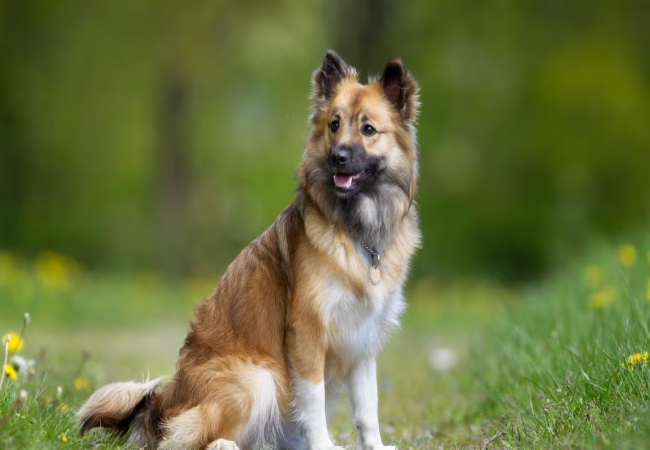Icelandic Sheepdog 2025 Guide: Temperament, Care & Training 🐶

In this article
Icelandic Sheepdog 2025 Guide: Temperament, Care & Training 🐶
By Dr. Duncan Houston BVSc
The Icelandic Sheepdog is a cheerful, intelligent, and hardy herding breed known for its expressive face, curled tail, and boundless enthusiasm. As Iceland’s only native dog breed, this spitz-type companion is beloved for its agility, friendliness, and ability to thrive in rugged climates. In this expert 2025 guide, you’ll learn how to raise, train, and care for this vivacious Nordic dog. 🐾
📜 Breed Origins
Brought to Iceland by Viking settlers over 1,000 years ago, the Icelandic Sheepdog was bred to herd sheep and protect livestock in harsh terrain. Today, it is a national symbol of Iceland and valued as both a working dog and loyal companion. 🇮🇸
🧠 Temperament & Personality
This breed is famously upbeat, alert, and friendly. Common traits include:
- Playful: Always ready to interact with people and dogs
- Vocal: Known for frequent, expressive barking
- Loyal: Strongly bonded to family—great with kids
- Hardy: Brave and eager even in harsh conditions
🏡 Ideal Home Environment
Ideal homes for this breed provide activity and companionship:
- Families with children and other pets
- Rural or suburban homes with fenced yards
- Cool climates—they do best in cold or temperate weather
Not ideal for sedentary lifestyles or homes with noise restrictions. 🏡
✂️ Coat Type & Grooming
Icelandic Sheepdogs have thick double coats—either short or long:
- Brushing: 2–3 times weekly; daily during shedding season
- Bathing: Every 6–8 weeks or when dirty
- Ear/Nail Care: Weekly cleanings and monthly trims
🏃♂️ Exercise & Enrichment
This is an agile, herding breed that needs daily activity:
- 60–90 minutes of exercise daily (walks, play, hiking)
- Agility, obedience, and herding tasks are great outlets
- Puzzle toys and trick training keep their minds sharp
Without stimulation, they may bark or develop behavioral issues. 🧠
🍗 Nutrition & Feeding
Feed a high-protein, medium-breed diet that supports joints and coat health:
- Meat-based proteins like chicken, lamb, or fish
- Omega-3s for coat condition and joint support
- Probiotics and fiber for digestive balance
Feed twice daily. For custom diet planning, visit Ask A Vet. 🍽️
🩺 Common Health Concerns
This is a relatively healthy, long-lived breed (12–15 years), but may be prone to:
- Hip Dysplasia: Watch for limping or stiffness
- Patellar Luxation: Small joint instability—look for skipping gait
- Allergies: Skin and seasonal triggers are possible
Monitor symptoms and wellness with Ask A Vet. 🩺
🎓 Training & Socialization
This bright breed is easy to train but sensitive to tone:
- Start early with crate and leash training
- Socialize with people, sounds, and animals during puppyhood
- Use positive reinforcement—food, praise, and toys
🧘♂️ Emotional Needs
They crave connection and routine to feel confident:
- Include them in family routines—they don’t like being ignored
- Offer regular training and play to satisfy their minds
- Rotate toys and activities to reduce boredom
For support with separation anxiety or stress, visit Ask A Vet. 🧠
🏁 Final Thoughts: Is the Icelandic Sheepdog Right for You?
If you’re seeking a friendly, trainable, and weather-tough companion with strong family instincts and a love of life, the Icelandic Sheepdog may be the perfect fit. With engagement and routine, they thrive in active, loving homes. ❤️
Need help planning your Icelandic Sheepdog’s care? Start a consult at Ask A Vet today!






